Today we return with part two of Fire Safety for the Automotive Enthusiast.
In Part One we covered the requisite building blocks of fire protection including the types of fires, and the many fire hazards associated with the hobby both in the garage and the car. In this installment we will cover fire detection and suppression, including the choosing and use of fire extinguishers.
Parts one and two were written at the same time, and initially the intent was to release the two parts only a week apart. With the release of part one we had as many of you know, been made aware of a new type of fire extinguisher. While we were able to contact the company to learn more in short order, our busy driving schedule conflicted with the need to further investigate and apply that new info to part two. In the meantime however we decided to cover this new extinguisher in an article of it’s own. Watch for that article coming soon.
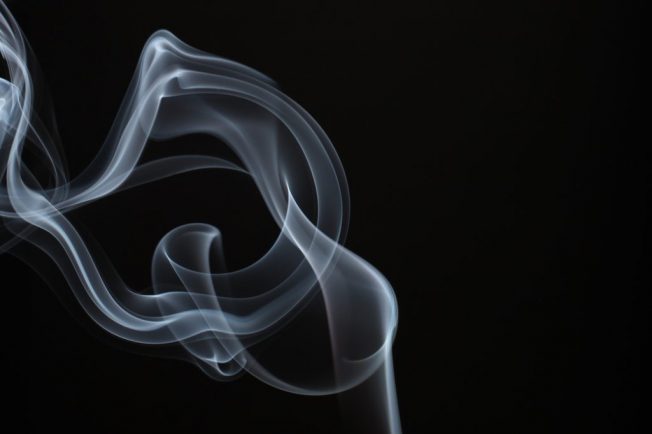
Fire Detection
Smoke Detectors
We’d like to think everyone has smoke detectors in their homes already. If not, be aware that in all likelihood you live in an area where they are required by law. We simply cannot stress enough the importance of smoke detectors in the home.
Unfortunately completely covering the topic of smoke detectors would be an article of its own. Here we will simply outline a few considerations as they uniquely apply to hobbyists.
Fire detection in the garage is invaluable. Assuming a fire would only occur while you were present and hard at work would be a mistake. However there is a real challenge in providing appropriate protection while avoiding nuisance false alarms.
Unfortunately much of the work we perform in our garages can confuse the simple technology found in smoke detectors. Exhaust, aerosols, spray paint, dust, welding fumes, particles from grinding wheels and many others contaminants can set off a detector. While using a detector that has a ‘hush’ feature that temporarily silences alarms while you perform your work is strongly advisable that alone may not be effective at reducing nuisance alarms.
There are two basic technologies utilized; photoelectric and ionization. The first is best at detecting smoldering fires, while the latter is best at detecting fast flaming fires. As one could never anticipate the type of fire they might suffer experts generally recommend the use of a combination unit. However combination units may not be the best choice for the garage if it is used as a workshop.
While placing a detector right above your work bench, or above the cardboard box you use as a makeshift paint booth (we aren’t alone in this are we?) is probably pretty obvious it may take more effort than that.
Each type of technology is more sensitive to certain contaminants than the other so for the auto enthusiast using only one type, or both types placed separately may be a more effective approach. By experimenting with the two types, and their placement in relation to the type of work you perform you may find that false alarms can be eliminated.
If you find that you simply cannot avoid false alarms, smoke detector dust caps are available. These are coloured bright red to remind you that they are in place. While not ideal, they are a better solution than pulling the batteries which you WILL forget about when you leave the garage. Remember while these caps are in place you have no fire protection in that area.
If the garage is attached to the home another solution though offering far less fire protection, could be placing the detector immediately outside the door connecting to the house. Of course the best solution though pricey is to have a professional install a heat detector.
Whether or not the garage is detached from the home, the detectors should be connected to those inside the home so that if one goes off, they all alarm. These are available in both hardwired as well as wireless forms.
While it’s a going joke that no one reads instructions, this is a case where we really need to resist that cliché. Read and keep the instructions that came with your detector they will describe how and where to mount the detector. Take note of the description of the various alerts such as the low battery alert which is distinctly different from the alarm. Knowing the difference will avoid unnecessary calls to the fire department, especially in the case of carbon monoxide alarms with no obvious outward signs to confirm the alarm. Most detectors have a limited lifespan and some batteries now last up to ten years. The instructions will outline these timelines.
Some basic maintenance will extend the life of your detector including avoiding subjecting them to unnecessary humidity and contaminants, and periodically giving them a light vacuuming with a brush attachment. And remember to replace the backup battery twice a year when you change the clocks for daylight savings. You did that this weekend riiiight?
While on the topic of detectors, and since it is Carbon Monoxide Awareness Week we’d be remiss if we didn’t address the risks of carbon monoxide (CO) poisoning and the appropriate use of CO detectors.
CO or carbon monoxide is a colourless, tasteless, odourless gas that comes from incomplete combustion of fuels (liquid, gas, or wood, coal etc). Carbon monoxide replaces the oxygen in blood and can result in death. Early signs can include dizziness, headaches, nausea and flu like symptoms. While high doses can kill in very short order, CO is accumulative, meaning regular moderate doses can build up in the bloodstream over time and symptoms may take days or weeks to appear.
Again, like smoke detectors, we’d like to think you all have at least one CO detector in the home. Generally most sources advise that carbon monoxide detectors are best left out of the garage. Even brief exposure from pulling into or out of the garage is enough to set most detectors into alarm. Such frequent exposure will shorten a detector’s lifespan. That advise is directed at those that keep their daily driver inside the garage, but likely don’t spend much time in the garage. That generalization may not apply to we enthusiasts.
We trust you know better than to run a combustion engine in an enclosed area such as a garage. If during inclement weather an engine must be run inside the garage, it should be for brief periods, the exhaust should be vented outside the structure, and plenty of fresh air available. If your garage is heated any sources of heat, that use combustion should be properly vented and installed following local codes. These codes were designed over time and sadly after many deaths to keep you safe, abide by them. For the record an open garage door does not necessarily equate to appropriate ventilation. Depending on the direction of the wind, and without a cross breeze fumes are just as likely to accumulate within the garage as not.
Different jurisdictions will have different laws dictating the use of CO detectors so it is best to consult your local fire department for advice. That said, most put priority on placing them outside sleeping areas rather than near the CO sources themselves (gas furnaces, fireplaces, garages etc.). While having an additional CO detector in the garage may offer some security it is NOT a replacement for one or more within the home.
The F-Bomb Garage – Frontseat Driving HQ, is as much a club house as it is a workshop. With a TV, couch and beers close at hand, it’s not uncommon to spend long hours in the garage. With a gas furnace running in the corner, a carbon monoxide detector was a must-have. The odd false alarm, or higher rate of replacement is a fair trade off for our safety. For great information, tips and downloadable resources please visit this site, or contact your local fire prevention department.
While the preceding was certainly far more info on fire detection than you had anticipated there simply is no more important link in the fire safety chain than that of early detection. Early detection allows you and your loved ones to escape safely and that is our primary goal.
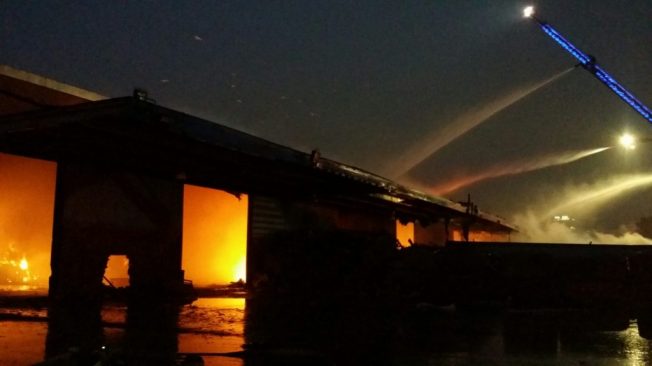
Fire Suppression
Fire Extinguishers
Everyone should have at least one extinguisher in the garage. And more inside the house!
Referring to the fire classifications in can help you In general for most people a class ABC extinguisher is an adequate choice.
As mentioned extinguishers are rated by the type of fires they most effectively extinguish. The same nomenclature (A, B, C) used to describe the types of fire is used for extinguishers. For a recap of the types of fire refer again toPart One. Choosing the appropriate extinguishing agent is essential to safe and effective operation.
An AB extinguisher is only for use on type A and B fires. An ABC extinguisher can be used on type A, B, and C fires. While uncommon a water extinguisher would only be rated as A as it would be unsafe to use for burning liquids or energized electrical equipment.
Additionally a numerical rating is used to designate the potential size of type A and B fires that the extinguisher can be expected to suppress. This system is not employed for type C fires. While there is meaning behind the numbers used, for simplicity sake understand that the larger the number, the larger the fire load (of that type) that the extinguisher can potentially extinguish. Following is an example of both systems in use; 5-A 10-B C.
The most common extinguishing agents can be grouped into three categories: clean agent, dry chemical, and water. A forth though generally less common in portable form is actually fairly common in the automotive world. Most race car plumbed fire systems employ foam.
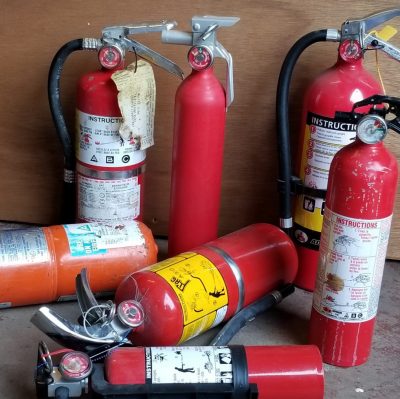
Selection of an effective extinguisher is not limited simply by the type of fire being extinguished. Numerous factors specific to your situation can come into play, especially any motorsport governing regulations. Professional consultation can be a real asset here. Reaching out to your fire department, race scrutineers, and even fellow hobbyists can be great sources of information. There are however a few general considerations that we can cover here. Let’s look at each of the agents and their respective advantages or disadvantages.
Carbon dioxide, Halon, or Halotron type extinguishers work fully or in part by displacing oxygen, which of course we need to live so discharging one in the occupied enclosed cabin of a car can be extremely dangerous. Even a brief lack of oxygen can cause unconsciousness or death. While realistically, our first course of action would be to evacuate the car this is still worth consideration.
That said, used safely from outside the car they can be very effective at extinguishing cabin fires without the terrible mess of dry chemical extinguishers. For this reason they are often referred to as clean agent extinguishers.
While these same agents are effective for energized electrical fires and especially useful with sensitive electronics their effectiveness in a deeply routed Class A fire is limited as they have little ability to cool the fire. The risk here is that extinguishment is only temporary as the retained heat can quickly cause a rekindle. As such they may not be the best choice for a typical garage fire and is why they are often only rated BC.
Carbon dioxide extinguishers are built of thick steel and the contents are liquefied thus these extinguishers are quite heavy, and generally only available in larger sizes not conducive to automobiles or hanging on a garage wall.
Water extinguishers aren’t terribly practical. The first drawback is that while they are very effective, they are limited to Class A fires. To be of any real use the water is generally combined with a source of pressurization, without which you are left with the option of a manual pump. That brings us to the second draw back – the weight and the size needed for effective fire extinguishment just isn’t suited to a vehicle, nor are they easy to source.
While a water extinguisher isn’t easy to find, a garden hose in the garage certainly is so let’s quickly discuss using water for fighting fires. While water as an extinguishing agent can be effective on class A fires, using water to extinguish an energized electrical fire, or a fire involving liquids (gas, oil etc.) is terribly dangerous.
While the danger of mixing electricity and water should need no explanation, many fail to understand that water can spread a flaming liquid not only driving the fire into contact with other combustibles but even dividing the fire into multiples. NEVER use water to fight an electrical or flammable liquid fire.
In general ABC rated dry chemical extinguishers are the best all around compromise for car fires. However while they are effective in the cabin, you may want to keep in mind that they create a terrible mess that will linger for months in the crevices of your vehicle and many agents are corrosive to metals especially the delicate metal electrical connectors. While a lingering sprinkling of powder on your legs from under the dash while driving is preferable to a torched car you may want to consider one of the clean agent alternatives mentioned earlier for use inside the cabin.
Dry chemical extinguishers are a great option for fires in the engine compartment. Not only are they usually appropriately rated ABC there are sizes and weights available for the car. An engine fire, builds heat quickly, while ideally dissipating that heat would be part of the suppression technique that isn’t always possible. While dry chemical extinguishers don’t reduce heat they can leave a lasting layer of powder that cuts the oxygen chain hopefully until the engine cools down. If this connection isn’t immediately clear please consider reading Part One again to review the brief description on fire science.
A disadvantage of dry chemical extinguishers is that to be most effective they require a direct line of sight to the fire, which can be tricky in the case of an engine fire where the hood is too hot to lift.
The ranges of sizes and weights and (usually) ABC rating make dry chemical extinguishers an appropriate choice for use in the garage as well.
2 – 2.5 – 5 – 10 – 20 lb extinguishers(duct tape for size reference)
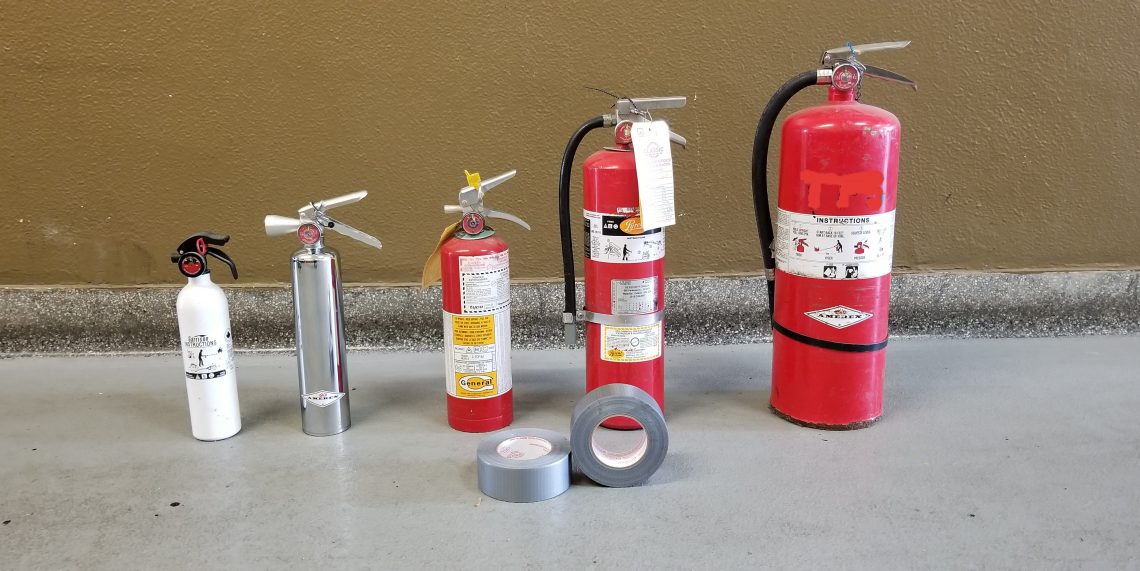
As mentioned earlier the effective fire load that an extinguisher can potentially extinguish is denoted with a number as in this example (5-A 10-B C) and is too technical to appropriately cover in this article. To effectively address this issue, one should consult their local fire prevention department. However – given the appropriate choice of agent – there is generally a correlation between size and effectiveness. Generally the safest fallback is to choose the largest physical size that remains practical.
It is common to see extinguishers described by the weight of the extinguishing agent contained therein. Over time these weights, have unofficially become somewhat of a standard method of denoting the SIZE of the extinguisher more so even than the actual amount of agent within. The photo above depicts the various common sizes in comparison to each other. While using this weight terminology to determine the size you need is far from technical, it will assist us in discussing practical sizes for the average enthusiast.
Though common a 2.5 lb extinguisher is the very smallest size that should be used.
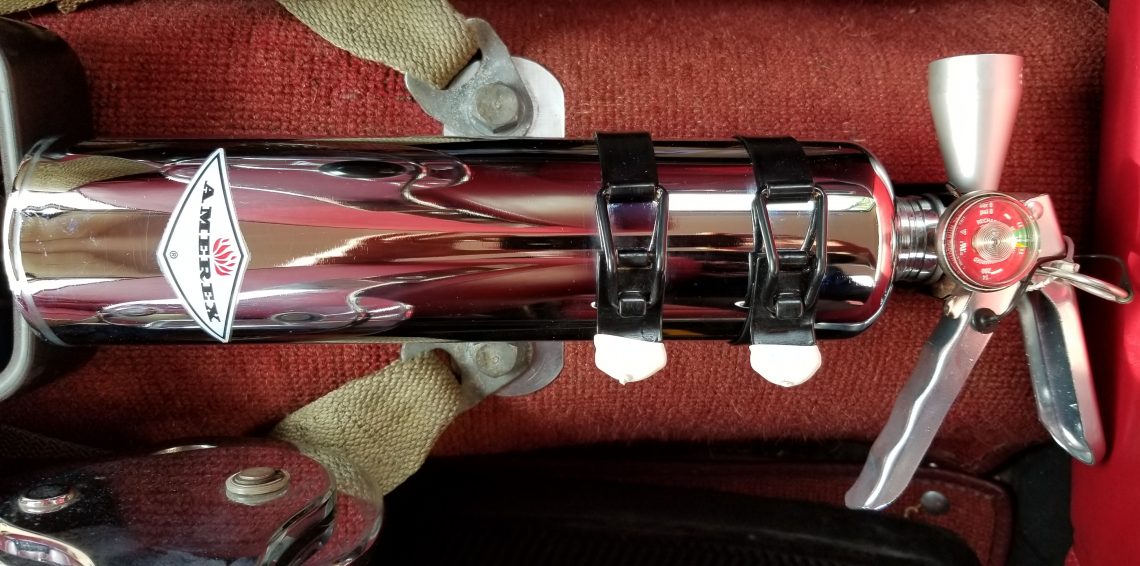
For automotive use, nothing below a 2.5 lb extinguisher is likely to be effective. In practice an engine fire would likely dictate at LEAST a 5 lb extinguisher. Our practice at Frontseat Driving is to run a 2.5 pound clean agent BC extinguisher for cabin use, and in the trunk a 5 lb dry chemical ABC extinguisher. Both extinguishers are very securely mounted to avoid accidental discharge and to keep secure in case of a collision.
In the home or garage our opinion is that a 5 lb extinguisher is the bare minimum. It’s moderate size means ease in portability and use, and it is easily mounted on the wall beside your exits. That said the 10 pound extinguishers that you see on the walls of offices and the halls of high-rise buildings were enforced by experts for a reason and taking their lead is recommended.
The F – Bomb Garage is equipped an odd assortment only because of how they were acquired. One 2.5 lb, and one 5 lb dry chemical ABC extinguisher is found at each door. A couple 5 lb extinguishers or a single 10 lb extinguisher would be a more typical arrangement.
Extinguishers should be mounted near exits.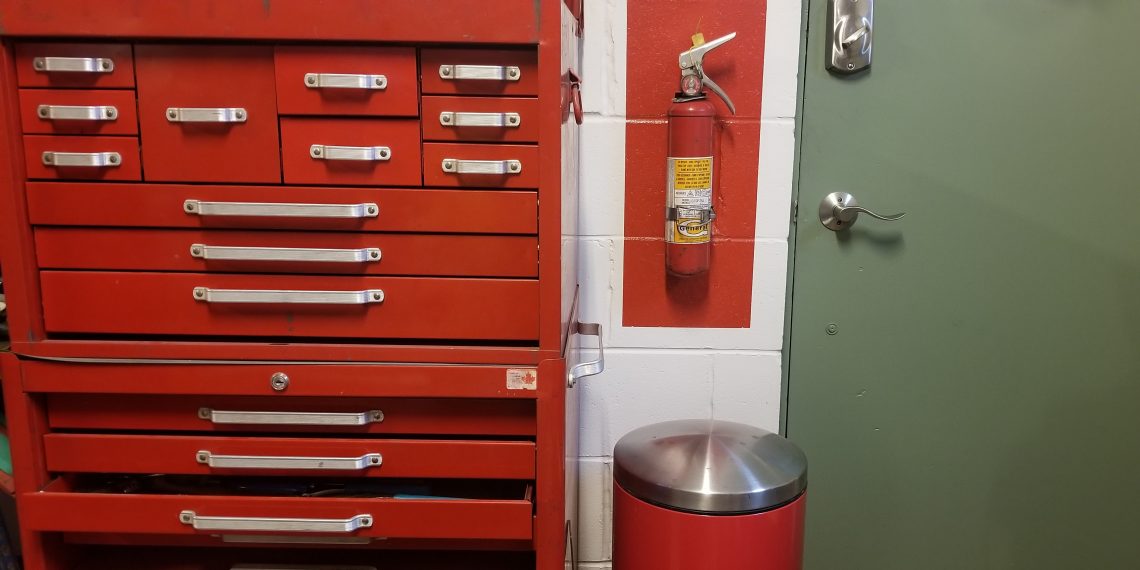
Ideally extinguishers should be located at the doors of the home or garage. Mistakenly people often mount their fire extinguishers close to the stove, or tucked away in a nearby cupboard, while they should be located AWAY from the fire.
In the case of a fire your FIRST reaction should ALWAYS be to escape. ALWAYS!
Once you and any other occupants are safely out of the structure (or away from the car), you can safely call the fire department.
Calling the fire department is number two after evacuation. Fire grows and spreads far quicker than most imagine. Extinguishers have limited capacity and without training, attempts at extinguishment often fail and can actually spread the fire. The size of a fire is never used to determine whether or not to call 911. ANY fire is reason to call.
AFTER calling the fire department you can take the time to better evaluate from a distance whether you feel comfortable in attempting to extinguish the fire.
Hopefully now the placement of fire extinguishers makes better sense. Having them at the exits, not only promotes safe evacuation, it provides a safer place to evaluate. Furthermore if the decision is made to attempt to extinguish the fire, the individual is automatically establishing a safe route of retreat.
NEVER ALLOW THE FIRE TO GET BETWEEN YOU AND THE EXIT.
Remember your priorities are ESCAPE and CALLING 911.

There are often some other options available when a fire does start. Referring above to the science of fire, removing one or more of Heat, Oxygen, or Fuel will extinguish a fire.
Pot on the stove or garbage can on fire? Protect hands, place the lid on.
Puddle of fuel on fire? Smother in kitty litter, or soil.
Electrical appliance on fire? Unplug or cut the power at the breaker.
Carburetor fire? Starting the car often extinguishes the fire. A wet rag tossed over the carb is also effective.
NEVER USE WATER TO EXTINGUISH A BURNING LIQUID OR AN ENERGIZED ELECTRIC APPLIANCE!!!
Never turn your back to a fire, even after the fire is extinguished there is a strong likelihood that the fire will retain enough heat to reignite.
Even if you successfully extinguish the fire, it is best to let the fire department confirm extinguishment and ensure that there hasn’t been any fire spread.
Do NOT be embarrassed to call the fire department. Calling them as soon as possible keeps you, your family, your neighbours, your property, and THEM safer!
Car Fires
Okay, so what if you suffer a car fire on the road?
Just like in the house or garage the first priority is escape.
To do that you first have to remain calm. Observe traffic and signal as you would in the case of a flat tire and pull safely over to the side of the road.
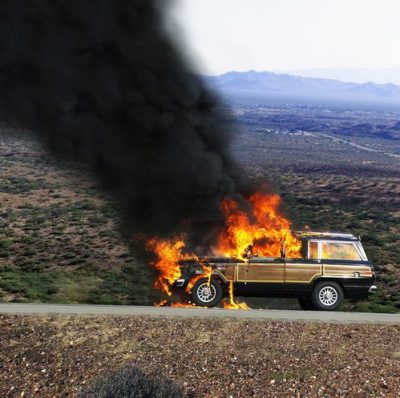
Remain calm. Unlike on TV the odds of your vehicle exploding are slim to none, especially with modern vehicles with plastic fuel tanks. For interest sake any ‘explosions’ heard at car fires are usually the tires popping.
After safely pulling over to the side of the road (away from other cars and buildings) place the car into gear, or park, and set the parking brake. Turn the ignition off, and quickly remove your family. If you really have your wits about you, pop the hood release. Make sure you take your clothing if it is cold and or raining, and keep yourselves as far from the roadway as possible. Your greatest risk is no longer the fire but an ensuing collision.
Keep upwind of the vehicle. The plastics, and upholstery release EXTREMELY dangerous smoke.
Keep uphill of the vehicle, often the gas tank will melt, and if it does flaming fuel will run downhill.
Once you and your family are safely distanced from the vehicle, uphill and upwind, just as before the second priority is to call 911.
If you are driving along and discover that you have a fire under the hood the chances are that by the time you safely pull over the fire ,fueled by the rush of air the fire will have grown beyond the ability of a handheld extinguisher.
Additionally there is a very good chance of burning your hands and face as you attempt to open the hood. As mentioned you need to approach from upwind, and uphill. If the flames are escaping the engine compartment or have spread from the engine to the cabin the fire is beyond your abilities, and the danger has grown substantially. Keep these facts and the roadside dangers in mind as you decide whether or not to attempt to extinguish the fire.
If you drive a vehicle from the early 80s to in some cases the early 90s a significant additional risk is posed by the compressed gas safety bumpers. It is certainly worth knowing if your vehicle is equipped with these frightful devices before being thrust into the situation.
An under dash fire caught early is most effectively dealt with by closing all the doors and windows but the one you fight the fire from. Direct the extinguisher as best as possible under the dash, discharge the extinguisher then close the door. The closed doors and windows contain the agent within the car. This is especially important if using a clean agent and on a windy day.
Once again, while we hope to present an informative, and educational article, brevity has to play a significant role. If you feel that more information or greater detail would be beneficial we’d appreciate that feedback as well.
If you have any need for additional information or have any questions please don’t hesitate to ask. If we don’t know the answer we WILL find it for you, or at the least direct you to an appropriate resource. The article has been directed to fire safety for the automotive enthusiast which necessarily neglects most of the home. As we have mentioned many times, your local fire department (usually the fire prevention division) is the first ‘go to’ resource. Not only is the information reliable, but it is specific to your local laws and regulations.
Please take the time to talk to your family about the risks and danger of fire. Plan routes of escape, and agree on a safe meeting spot away from the house for all to meet. When the fire department shows up the first thing they need to know is that everyone is out of the home. Please consider the tools at your disposaland again more are available through your fire department.
While we have taken great care in gathering and presenting the information, mistakes happen, and editing can be faulty. If anything in this article seems off to you, or you simply disagree, we want to hear from you.
Finally, let’s be clear, this is the internet. NOTHING in this article or anywhere on the interwebs replaces professional consultation or training. Conduct yourself within the limits of your own knowledge and skill.